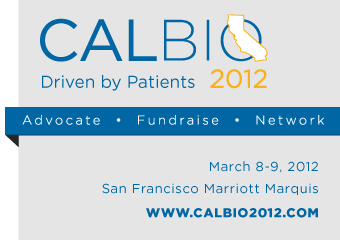The curtain is just rising on talks between the U.S. Food and Drug Administration and Congress on renewing a key piece of legislation that allows the agency to collect fees from the biopharmaceutical industry to fund review of its products.
The current incarnation of the Prescription Drug User Fee Act, which provides industry assurance of timely action on drug reviews in exchange for funding, is set to expire at the end of September. Last month, the FDA sent its recommendations to Congress for the fifth incarnation of the act, known as PDUFA V. It also sent recommendations for new user fee programs for generic drugs and biosimilars.
Congress is set to go to work on the renewal of the legislation as the FDA has approved a spate of new drugs. In 2011, the FDA approved a total of 30 new drugs and biologics, the most in seven years. It’s kept the pace going in January, with several additional approvals.
Last month the agency approved Lilly and Boehringer Ingelheim's linagliptin-metformin combination pill for type 2 diabetes, Jentadueto; Amylin and Alkermes’ type-2 diabetes drug Bydureon; Pfizer's kidney cancer drug Inlyta; Genentech and Curis' melanoma drug Erivedge; Vertex's cystic fibrosis drug Kalydeco; and BTG therapeutics Voraxaze, which clears the body of toxic chemotherapeutics.
Each of the proposed fee programs will get its hearing, with PDUFA starting first. The House Energy and Commerce Subcommittee on Health took up the reauthorization in a February 1 hearing at which lawmakers were reminded of the rough outlines of the latest proposal, drafted by the FDA, industry, and patient advocates together.
As the proposal stands now, industry would pay more than $700 million in fiscal 2013, and higher amounts in the remaining four years of the authorization to support resources to expedite the agency’s reviews. The agency will use that money in part to support better communications with drugmakers, through scheduled meetings both before new drug applications are filed and two to three months before assigned PDUFA dates.
Industry would generally like to see a renewal of PDUFA with minimal attachment of rules different than what it has already negotiated with the FDA through lengthy negotiations in 2011.
Testifying on behalf of the Biotechnology Industry Organization, Richard Pops, chairman and CEO of Alkermes, stressed the need for a quick reauthorization of PDUFA V that would “enhance the drug development and review process through increased transparency and scientific dialogue, advance regulatory science, and strengthen post-market surveillance.”
The Campaign for Modern Medicines, another industry group, sponsored by Eli Lilly, has argued for a “clean” PDUFA, “free of extraneous additions that bring new costs and burdens to the FDA.” In 2007, the group points out, PDUFA IV was passed only a few days before it would have expired in late September, causing “disruption in staffing and collection of user fees at the FDA in both the months preceding the deadline and the months afterward.” For that reason, it is seeking to get PDUFA renewed before July 4.
But not everyone is ready to close the door on additions or changes to PDUFA V.
Some, such as Allan Coukell, director of Medical Programs at Pew Health Group, still see room in the PDUFA reauthorization talks to tackle drug safety risks inherent in the current global supply chain. Pew would like to see geographic disparities in FDA oversight of drug manufacturing addressed, since the ingredients of many U.S drugs are now made overseas.
Diane Dorman, vice president of public policy for The National Organization for Rare Disorders, testified in support of some of the resources generated by the user fee program to be allocated to creating greater clarity and predictability for the review of novel therapies for rare disorders. Greater patient participation in the review of such drugs could become a reality, at least to some degree, if the Rare Disease Program Initiative that’s part of PDUFA V, she said.
David Gollaher, president and CEO of the California Healthcare Institute, testified on behalf of his group’s 300 biopharmaceutical and medical technology company members. He pointed to his members’ desire for more granular information to be collected from the division review level within the agency “in order to understand where things are working and where they need improvement.”
Gollaher noted that “there are significant deviations in average review times, depending on a product’s therapeutic area,” and hopes that fresh data might help clarify what explains differences in performance from one therapeutic area to another.
No matter how much or how little PDUFA V changes before legislators approve it, it will remain a crucial part of the overall funding supporting the agency. PDUFA fees accounted for 62 percent of the $932 million the FDA spent in fiscal 2010 conducting human drug reviews. Budget appropriations provided the balance of the funding.
February 03, 2012
http://www.burrillreport.com/article-fda_industry_urge_quick_passage_of_user_fee_renewal.html





.gif)